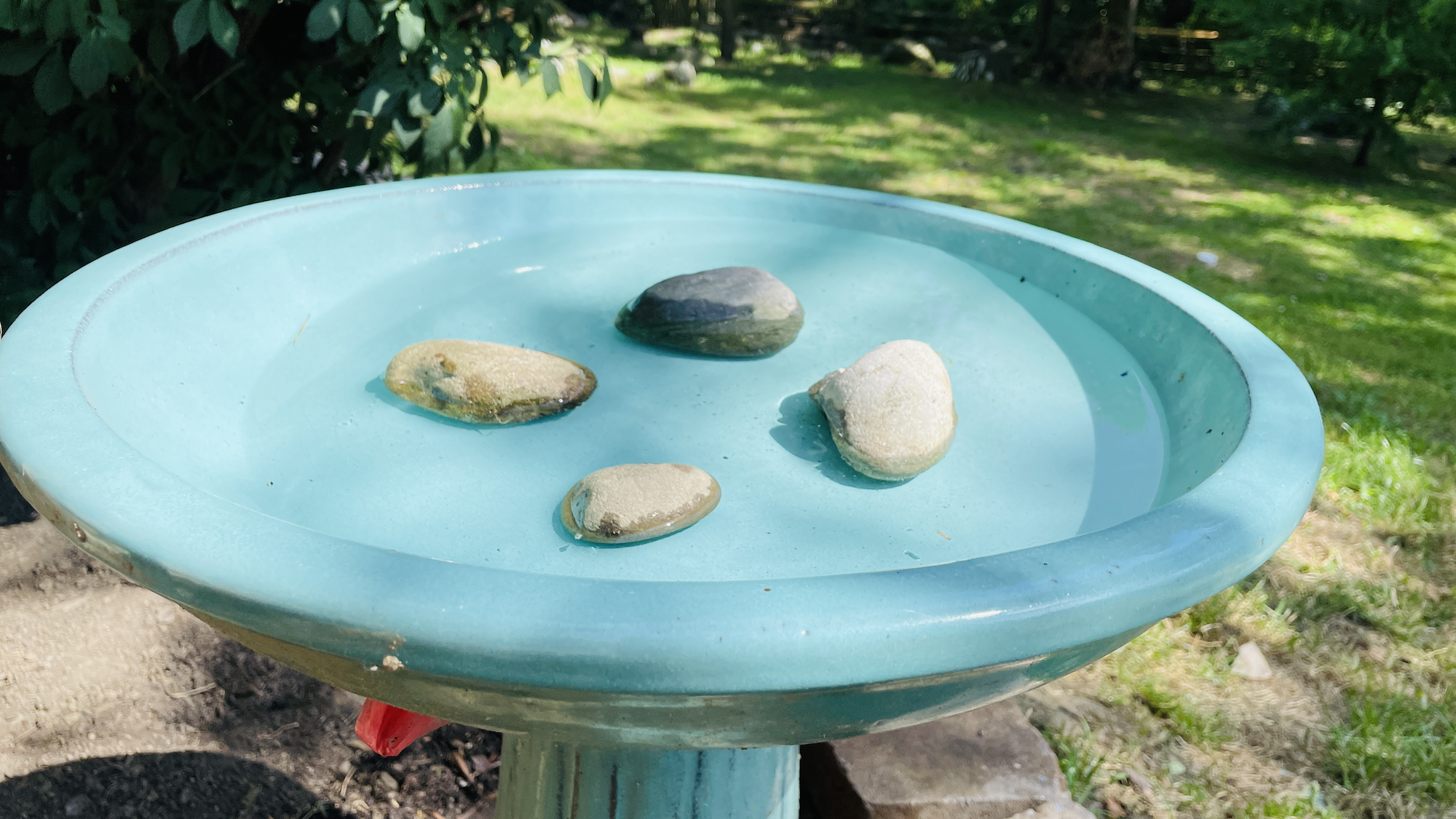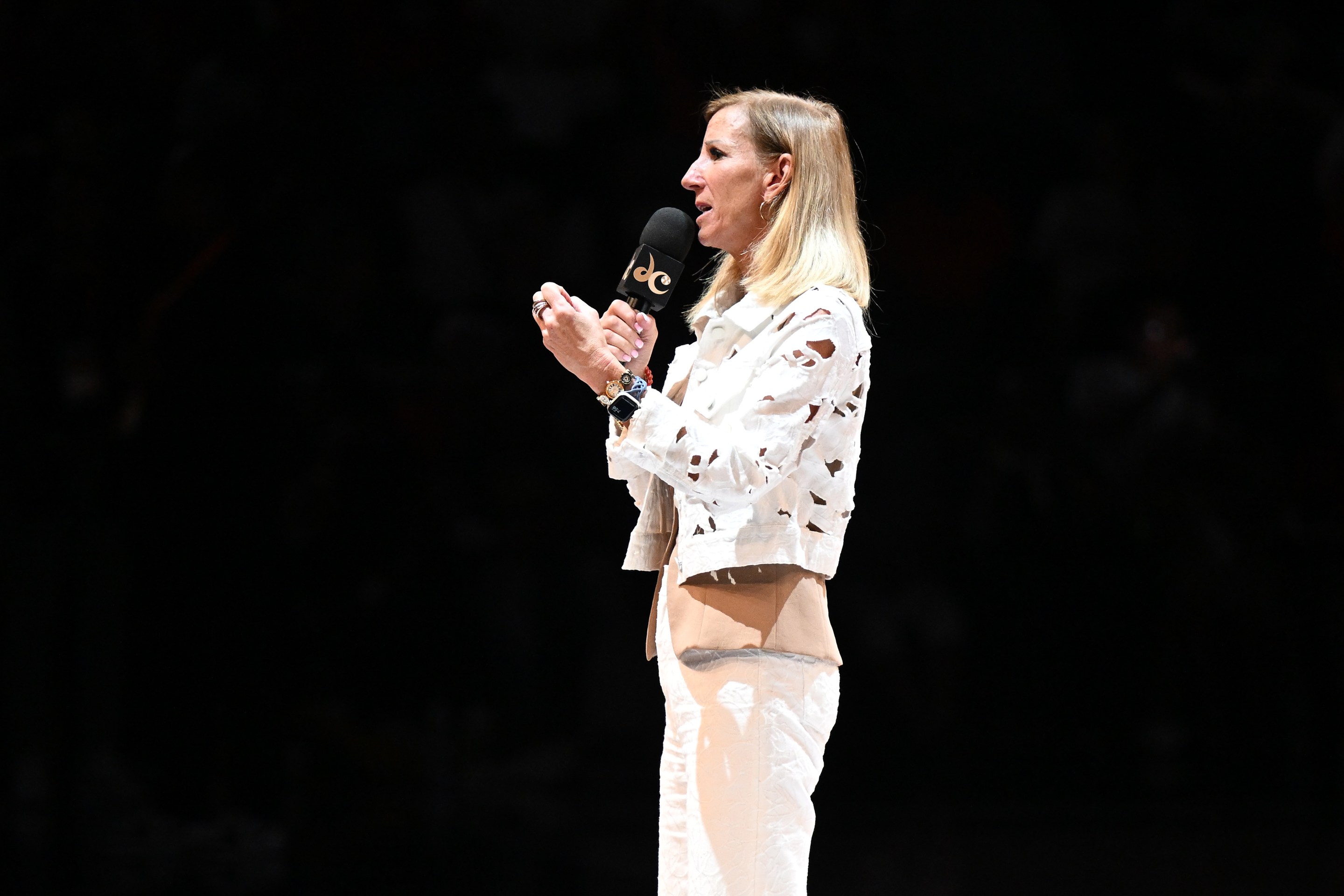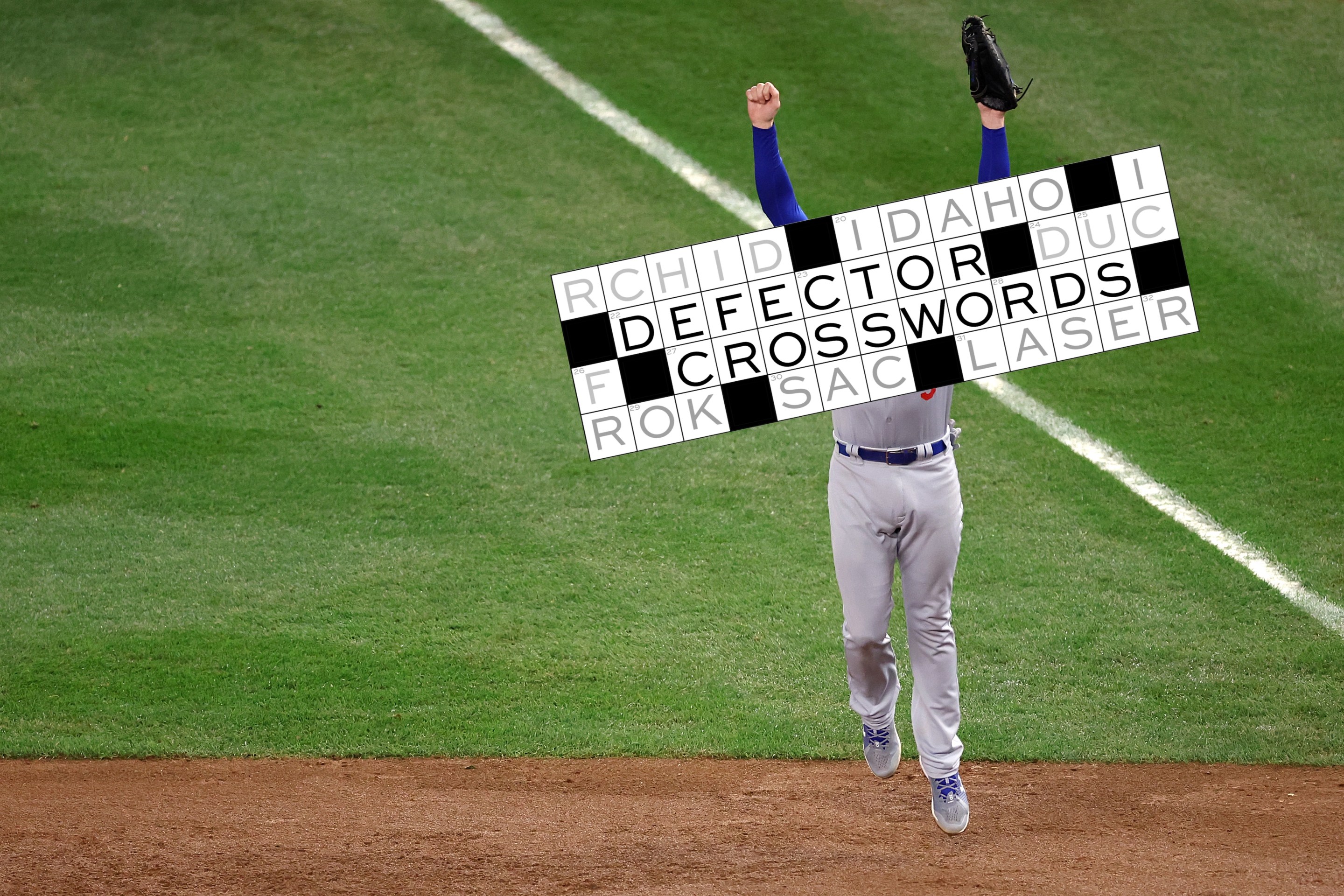Perhaps you, being wise and good and frankly very attractive, have a bird feeder. Perhaps you have had the thought, Like the birds, I too enjoy eating. I also enjoy water, for various purposes. Does this not imply that the birds might also like water? I don't know whether it implies that! Maybe it does!
Either way, the birds do, in fact, like water, even if this is only a coincidence and unrelated to their also liking food. Maybe you would like to supply the birds with some water. For drinking or washing themselves or taking a nice cooling dip or whatever. You can do that. You can have a birdbath.
It's nice to have a birdbath. If it is situated OK and meets certain broad parameters, then pretty birds will come and perch at its edges or any perch islands (more on this in a second) that you put in it. They will drink and splash themselves, and they will perch nearby on tree-branches and clean their wings or whatever, and sing. It's a sweet deal. I recommend it.
Up there in the photo is a ceramic birdbath with a pedestal that I bought at a plant nursery nearby. It is not a particularly special or good birdbath; I got it because I thought it was pretty. It isn't even level, as you can see, because my house sits on an absurd slope and basically nothing here is level. In the woods uphill from my house there is another "birdbath" that is just the upturned lid of an old-fashioned metal garbage can, propped in the branches of a skinny little tree; it is a lot less pretty than the ceramic blue one. (It also is not level.) You will just have to trust me on this; I am not trekking up the dang hill on a lovely Father's Day just to take a photo of the lid of a damn trash can. The point here is that the trash-can birdbath exists, and is just the lid of a trash can.
The birds, so far as I can tell, like them equally, and like them just fine. Your birdbath does not have to be fancy, is what I am saying. Your birdbath can be, in fact, a shallow dinner bowl, or a ceramic ramekin of the sort you might, uh, make crème brulée in, or an upside-down frisbee, or really anything that is wide and shallow and has a raised rim so that it can hold a shallow puddle of water in it.
Here are some tips for setting up a birdbath that birds will use, and that will not just function as a death-trap for your lovely feathered pals (the birds).
The water in the bird bath should not be more than a couple of inches deep. You are not hosting ducks, here; the birds are not going to swim in this sucker. We are talking about little songbirds, or maybe something as big as a bluejay or a robin. They are just going to splash around in it a little bit and then go away. If it is very deep, they will only be able to stand on the rim around the very edge of it, which will limit its usefulness.
The surface of the water should not be more than like an inch or so below any perches around or in the birdbath. Mostly the birds will want to land on the rim or on any perches and bend down and dip their wings or beaks into the water; if the water is way down below where they are perched, they won't be able to manage this, and they will just go find some puddle instead. Do you want the birds to have to resort to some dirty dang puddle for their water fun? You do not. That is the whole purpose of the birdbath.
Speaking of perches, it's good if you can find some nice rocks or something to put in the water, for the birds to perch on. This will allow them to use more of the surface of the birdbath, because there are more places to perch in it. The rocks will also, if they reach up out of the water, break up the surface of the water a little bit, giving sunlight more places to sparkle and flash on the surface, which will be attractive to birds. In general, also, the more dry perches in and around the birdbath, the more safely birds can use it without being preyed upon by their hated foe, cats.
Cats are a big danger at birdbaths, and for little birds in general! The poor birds are very simple creatures. They see a birdbath, and they go to it. Cats can feast on small birds simply by sitting next to a birdbath and waiting, if given a chance. For this reason, it is good to mount the birdbath on a pole or pedestal or any kind of elevated base narrower than the bath itself, or in some other way make it difficult for non-flying creatures to reach. Cats are not much of a danger at my place; my property is patrolled by three large and smelly dogs whom no cat would want to hazard encountering just for a bird snack. Even so, I have another birdbath, a very small wrought metal one, maybe eight inches in diameter, that hangs on chains from a hook at the end of a slim metal pole that stabs into the ground. It doesn't have any water in it right now but it's a fine birdbath for very small birds, and I would love to see any dang cat, even one wily enough to elude the dogs, try to get to it. They couldn't damn do it!
Also along safety lines, it's good to station your birdbath in a reasonably open space, like in the middle of a backyard, so that there are not a lot of nearby hiding places for cats. But cats are not the only predatory danger for bathing birds! There are also birds of prey, like hawks, that can swoop down out of the sky and pluck a poor wet little bird off to bird-hell if given the chance. To protect your birdbath from these, it's good to station your birdbath in a place where it has some amount of leaf cover above it, so that soaring hawks may not so easily spy on it. This may seem contradictory, or flatly impossible if you live in a place with no tall trees. Well, shit. In that case I am very sorry.
Something else that small birds like to have near the birdbath are maybe some nearby low branches, where they can wait for their turn at the birdbath and where they can perch and clean themselves after taking a dip in the birdbath. But maybe you can't accomplish all of these things—empty space around the base and basin of the birdbath, cover above, branches nearby—in the same area. If you have to go without one of these, go without the nearby branches; if the birdbath is safe enough in the other respects, the birds can make do.
So you have your birdbath, and it has rocks in it and water in it. Now you will need to replace the water every few days or so, particularly if it is being used, so that it doesn't get gross and unsanitary and so that mosquito eggs do not hatch in it. This is probably the most annoying part of having a birdbath, which is nice because it's not really a big deal. Simply dump the birdbath out, wipe the basin out with a paper towel, and put some fresh clean water in there. Here it helps if the birdbath is not some two-ton marble type of deal permanently affixed to the ground. If it is that, you will have to come up with some other method of getting the stinky old water out of it.
Maybe you have set up your birdbath and it meets the above guidelines and now you are wondering: Where in the damn hell are the birds? Be patient! Birds, like most wild animals, mostly live their lives on the razor line dividing survival from horrible death; if they know where a familiar and safe water source is, they will default to that one for the most part, and might be wary of taking a chance on a new one until circumstances make it more convenient for them. So maybe they are splashing it up at a stream nearby, or at somebody else's much cooler and more luxurious birdbath that they have been to before. If enough time goes by, and your birdbath remains clean and filled with water, and the birds are getting enough to eat and having babies and the babies are surviving, eventually some of them will find your birdbath closer and more convenient than the other one, and will come use it.
This might not happen until the hotter, later part of summer, when the stream bed is running drier or the neighbor has gone on their fancy month-long vacation to Switzerland or whatever and their birdbath looks like The Worst Toilet in Scotland. Then the birds will take a chance on your birdbath, and if it works out for them—if they are not gruesomely devoured by a hawk or infected with some grody parasite because the water is filthy—they will prefer returning to your birdbath again and again. That's the good stuff: Regular bird friends, singing and hanging out and mingling with each other at your nice birdbath.
Give it a try! This is not a metaphor for or a secret to any deeper happiness. It's just pleasant and good.







